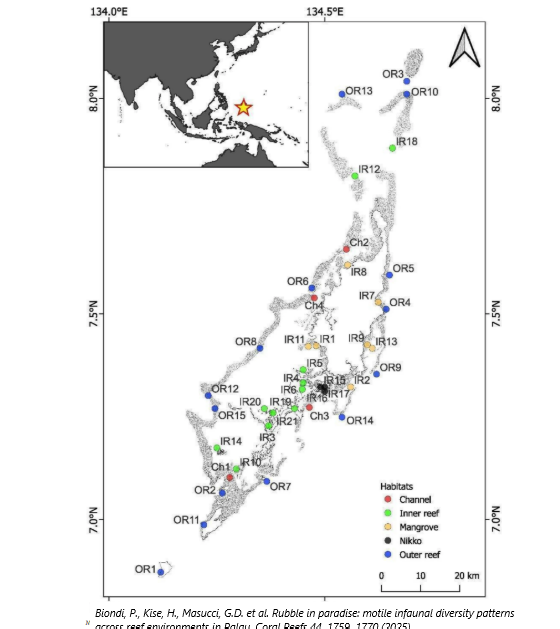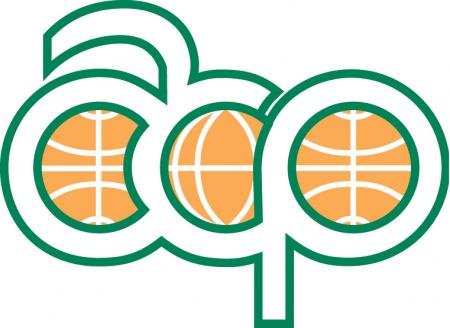
Assessments of coral reef biodiversity generally focus on corals and fishes, although there is a variety of other taxa that live within the structure of coral reefs. Rubble cryptofauna includes sessile and motile species that inhabit dead coral and coral rubble and play critical roles in coral reef ecosystems. The examination of rubble cryptofauna can provide insights into the health and functioning of modern coral reefs. Here, we sampled rubble cryptofauna > 1 mm in size at 40 sites around the Palau archipelago (Western Micronesia) at outer reefs, channels, mangals, inner reefs, and the unique environment of enclosed Nikko Bay (Ngermid). Nine phyla, 174 families and 284 Lowest Identifiable Operational taxonomic units (hereafter LIOs) were identified from 4923 specimens. Outer reefs harboured the highest numbers of LIOs, followed by inner reefs, mangroves, channels and Nikko Bay. The nMDS analyses suggested that rubble cryptofauna communities of channels occupy an intermediate position between those of outer reefs and inner sites. As channels provide links between sites and are limited in number and area, they are important habitats to consider in future conservation planning. Finally, different taxonomic levels showed almost identical results, suggesting that analyses at higher taxonomic levels, while being easier to conduct with lower numbers of potential errors, have the potential of being useful for some habitat comparisons. However, this observation will need to be further verified with a larger variety of target specimens sizes and taxonomic levels in future research. The current dataset provides a rubble cryptofaunal baseline that can be compared to results of future examinations as coral reefs in Palau continue to be impacted by climate change.














